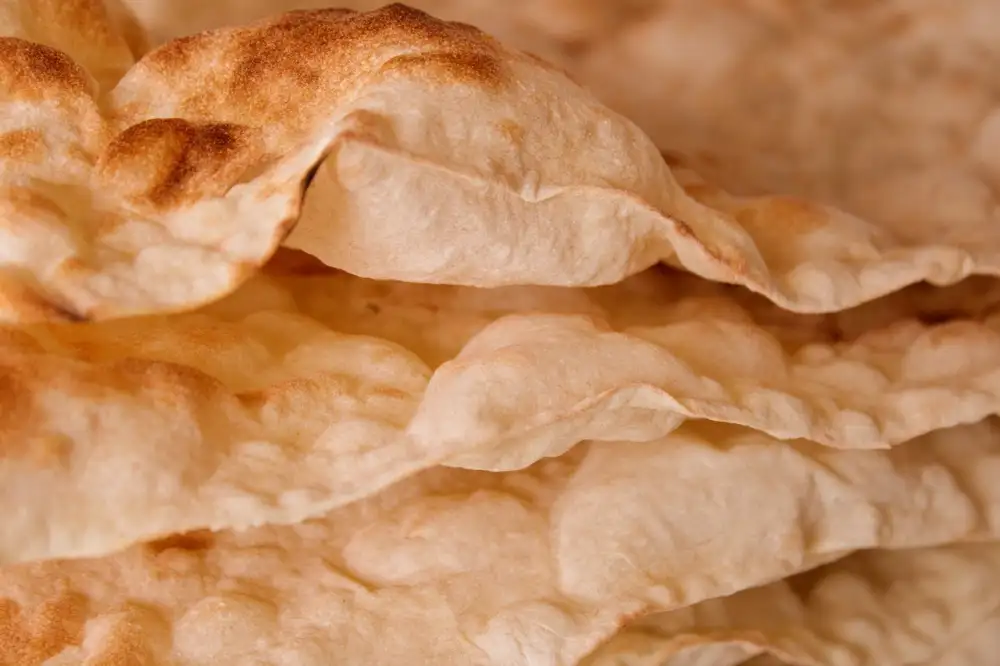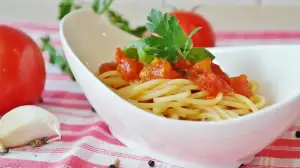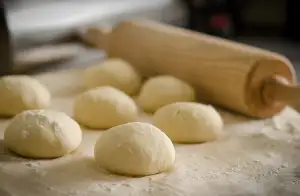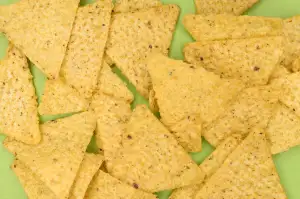Unleash Your Taste Buds: Exploring the Delectable World of Flatbreads in Middle Eastern and Indian Cuisines

Flatbreads, a staple in Middle Eastern and Indian cuisines, have been delighting taste buds for centuries. These versatile breads are characterized by their thin, unleavened dough that is cooked quickly on a hot surface. Flatbreads come in various shapes and sizes, and they can be enjoyed on their own or used as a vessel for delicious fillings and toppings. Join us on a culinary adventure as we dive into the delectable world of flatbreads and explore the rich flavors they bring to our plates.
History and Origins of Flatbreads
Flatbreads have a rich history that dates back thousands of years. They are believed to be one of the oldest forms of bread, with evidence of their existence found in archaeological sites across the world. The origins of flatbreads can be traced back to ancient civilizations such as Mesopotamia and Egypt.
In Mesopotamia, flatbreads were made from barley and wheat flour and were cooked on hot stones or clay ovens. These early versions of flatbreads were simple and served as a staple food for many ancient civilizations.
In Egypt, flatbreads were known as "aish" or "aysh," which means life in Arabic. They were made using a combination of wheat flour, water, and salt. The dough was then flattened into thin rounds and cooked on hot griddles.
As trade routes expanded, so did the popularity of flatbreads. They spread throughout the Middle East, Mediterranean region, and eventually reached India and other parts of Asia. Each region developed its own unique variations of flatbreads based on local ingredients and cooking techniques.
The history of flatbreads is closely intertwined with the development of agriculture. As farming techniques advanced, grains such as wheat, barley, millet, and corn became more readily available. These grains formed the basis for making different types of flatbreads around the world.
Today, flatbreads continue to be an integral part of Middle Eastern and Indian cuisines. They are enjoyed in various forms - whether it's as a wrap for kebabs or falafel in the Middle East or as a side dish with curries in India.
The history and origins of flatbreads showcase their enduring appeal and versatility in different cultures. From humble beginnings to becoming a global culinary delight, these breads have stood the test of time and continue to delight taste buds around the world.
Popular Types of Flatbreads
Flatbreads are a staple in many cultures around the world, and each region has its own unique variations. Let's explore some of the most popular types of flatbreads that have captured the hearts and taste buds of food enthusiasts.
- Naan: Originating from India, naan is a soft and fluffy bread made with all-purpose flour, yeast, yogurt, and ghee. It is traditionally cooked in a tandoor oven and often served alongside aromatic curries or used as a wrap for kebabs.
- Pita: This round pocket bread hails from the Middle East and is made with simple ingredients like flour, water, yeast, salt, and olive oil. Pita breads can be filled with various ingredients to create delicious sandwiches or torn into pieces for dipping in hummus or other dips.
- Lavash: A thin unleavened flatbread from Armenia, lavash is made with flour, water, and salt. It is typically rolled out very thin and baked until crispy. Lavash can be enjoyed on its own as a snack or used as a wrap for meats, cheeses, and vegetables.
- Roti/Chapati: Found in many South Asian countries including India and Pakistan, roti (also known as chapati) is a whole wheat flatbread cooked on a hot griddle called a tawa. It is an essential accompaniment to curries and other Indian dishes.
- Tortilla: Although commonly associated with Mexican cuisine, tortillas are also prevalent in Central American and South American cuisines. Made with corn or wheat flour dough, tortillas are versatile flatbreads used for tacos, quesadillas, enchiladas, and more.
These are just a few examples of the diverse range of flatbreads enjoyed worldwide. Each type brings its own unique texture and flavor profile to the table, making them a delightful addition to any meal.
Traditional Middle Eastern Flatbreads
Middle Eastern cuisine is renowned for its wide variety of flatbreads, each with its own unique taste and texture. One of the most popular Middle Eastern flatbreads is pita bread, which is a staple in many countries across the region.
Pita bread is a round, pocket-like bread that is made from a simple dough of flour, water, yeast, and salt. It is baked at high temperatures, causing it to puff up and create a hollow center. This pocket can be filled with various ingredients such as falafel, hummus, or grilled meats.
Another traditional Middle Eastern flatbread is lavash. Lavash is a thin and flexible bread that can be rolled or folded easily. It is made from flour, water, and salt and then baked in a hot oven until it becomes crispy. Lavash can be enjoyed on its own as a snack or used as a wrap for kebabs or other fillings.
Manakish is another popular Middle Eastern flatbread that originated in Lebanon. It is similar to pizza dough but topped with various ingredients such as za'atar (a blend of herbs and spices), cheese, or minced meat. Manakish can be served as an appetizer or eaten for breakfast.
Saj bread is yet another traditional Middle Eastern flatbread that has gained popularity worldwide. It is cooked on a domed griddle called saj and has a slightly chewy texture. Saj bread can be filled with different ingredients like cheese, vegetables, or meat to create delicious wraps.
These traditional Middle Eastern flatbreads are not only delicious but also versatile in their uses. They can be enjoyed on their own as an accompaniment to dips like hummus or baba ganoush. They can also be used as a base for sandwiches or wraps filled with fresh vegetables and flavorful sauces.
The rich history and cultural significance of these traditional Middle Eastern flatbreads make them a must-try for any food lover. Their unique flavors and textures will transport you to the bustling streets of the Middle East, where these breads are enjoyed daily. So, next time you're craving something different, don't hesitate to explore the world of traditional Middle Eastern flatbreads.
Delicious Indian Flatbreads
Indian cuisine is known for its wide variety of flatbreads, each with its own unique flavor and texture. One popular type is naan, a soft and fluffy bread made from refined flour. It is traditionally cooked in a tandoor (clay oven), giving it a distinct smoky flavor. Naan can be enjoyed plain or stuffed with ingredients like garlic, cheese, or even minced meat.
Another beloved Indian flatbread is roti, which is made from whole wheat flour. Roti is typically thin and unleavened, making it a healthier option. It pairs perfectly with curries and other Indian dishes. Paratha is another favorite, made by layering dough with ghee (clarified butter) and then pan-frying it until golden brown. It can be stuffed with various fillings such as spiced potatoes or paneer (Indian cottage cheese).
Puri is a deep-fried bread that puffs up when cooked, creating a light and airy texture. It is often served with savory dishes like chole (spiced chickpeas) or as part of festive meals. Lastly, there's dosa – a thin and crispy pancake-like bread made from fermented rice and lentil batter. Dosas can be filled with different ingredients like potato masala or simply enjoyed plain with chutney.
These Indian flatbreads are not only delicious but also offer a wonderful way to experience the diverse flavors of Indian cuisine. Whether you prefer the softness of naan or the crispiness of dosa, there's something for everyone to enjoy in the world of Indian flatbreads.
Versatility and Uses of Flatbreads
Versatility is one of the key characteristics of flatbreads, making them a beloved staple in Middle Eastern and Indian cuisines. These thin, unleavened breads can be used in a variety of ways, from being a vessel for dips and spreads to serving as a base for pizzas or wraps. They can also be torn into pieces and used to scoop up flavorful stews and curries. The flexibility of flatbreads allows them to adapt to different culinary styles and flavors, making them an essential component in many dishes. Whether you're craving something savory or sweet, there's a flatbread recipe out there that will satisfy your taste buds.
Health Benefits of Flatbreads
Flatbreads not only tantalize our taste buds, but they also offer several health benefits. Firstly, flatbreads are typically made from whole grains, which are rich in fiber and essential nutrients. This can aid digestion and promote a healthy gut. Additionally, the low-fat content of flatbreads makes them a healthier alternative to other bread options. They are also a good source of carbohydrates, providing energy for the body. Moreover, the versatility of flatbreads allows for the incorporation of nutritious ingredients such as vegetables and lean proteins. By choosing wholesome toppings and fillings, you can create a balanced and nourishing meal with flatbreads. So indulge in these delectable delights guilt-free, knowing that they contribute to your overall well-being.
Tips for Making Perfect Flatbreads at Home
1. Use the right flour: For traditional Middle Eastern flatbreads like pita, opt for all-purpose flour or bread flour. Indian flatbreads like naan require a mix of all-purpose and whole wheat flour.
2. Knead the dough well: Properly kneading the dough helps develop gluten, resulting in a soft and elastic texture. Knead for at least 5-10 minutes until the dough becomes smooth.
3. Let it rest: Allow the dough to rest for at least 30 minutes before rolling it out. This allows the gluten to relax and makes it easier to shape the flatbread.
4. Roll it thin: Roll out your flatbread as thin as possible without tearing it. Thin flatbreads cook evenly and have a light and airy texture.
5. Use high heat: Preheat your pan or griddle on high heat before cooking the flatbread. This ensures that it cooks quickly and develops those desirable charred spots.
6. Keep an eye on it: Flatbreads cook fast, so be attentive while cooking them. Flip them when you see bubbles forming on the surface, usually after about 1-2 minutes.
7. Brush with butter or oil: To enhance flavor and prevent drying, brush your cooked flatbreads with melted butter or olive oil while they are still warm.
8. Serve immediately: Flatbreads are best enjoyed fresh off the stove when they are warm and soft. Serve them immediately with your favorite dips or curries.
By following these tips, you can create perfect homemade flatbreads that rival those from Middle Eastern and Indian restaurants!
Exploring Global Flatbread Variations
While Middle Eastern and Indian cuisines have popularized flatbreads, various cultures around the world have their own unique versions. In Mediterranean cuisine, pita bread is a staple, often used as a wrap for falafel or stuffed with grilled meats and vegetables. In Central Asia, naan bread is enjoyed alongside hearty stews and curries.
In South America, tortillas are a beloved flatbread made from corn or wheat flour. They are used to make tacos, quesadillas, and enchiladas. Moving to Africa, injera is a spongy Ethiopian flatbread made from fermented teff flour. It serves as both a utensil and an accompaniment to stews.
In Southeast Asia, roti canai is a flaky Malaysian flatbread typically served with curry. It's made by repeatedly folding and stretching the dough to create layers of buttery goodness. Meanwhile, in the Caribbean, roti is a popular unleavened flatbread filled with savory fillings like curried chicken or potatoes.
These global variations showcase the incredible diversity of flatbreads worldwide. Each one reflects the unique flavors and culinary traditions of its respective region. Exploring these global variations allows us to expand our palate and appreciate the rich tapestry of flavors that flatbreads bring to the table.
In conclusion, flatbreads are a culinary delight that have been enjoyed for centuries in Middle Eastern and Indian cuisines. From the ancient origins to the diverse types and flavors, these breads offer a unique experience for your taste buds. Whether you prefer the softness of naan or the crispiness of pita, there is a flatbread to suit every palate. So why not embrace the flavors of flatbreads and embark on a delicious culinary adventure? Explore different recipes, experiment with toppings and fillings, and savor the rich heritage and versatility of these delightful breads. Unleash your taste buds and dive into the delectable world of flatbreads today!
Published: 22. 11. 2023
Category: Food



